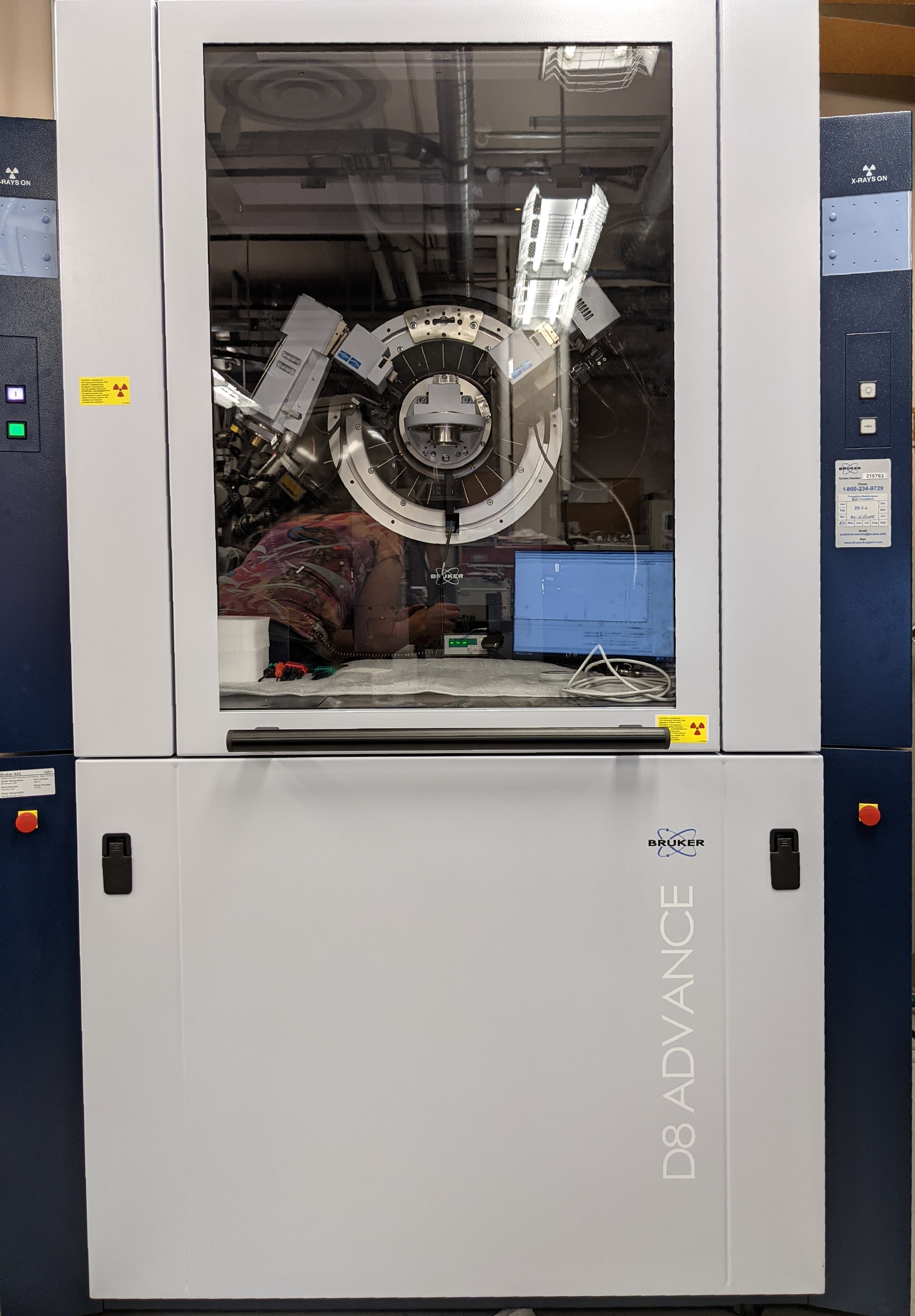X-Ray Powder Diffraction Spectrometer
D8 Advance
X-ray powder diffraction (XRD) is an efficient analytical technique used to identify and characterize unknown crystalline materials, where monochromatic X-rays are used to determine the interplanar spacings of the unknown materials. The samples are analyzed as powders whose grains are randomly orientated to ensure that all crystallographic directions are "sampled" by the beam. When the Bragg conditions for constructive interference are obtained, a "reflection" is produced whose relative peak height is generally proportional to the number of grains in that preferred orientation.
The XRD spectra generated by this technique thereby provide a structural fingerprint of the unknown sample. Mixtures of crystalline materials can also be analyzed, and relative peak heights of multiple materials may be used to obtain semi-quantitative estimates of the abundances. A glancing X-ray beam may also be used to obtain structural information of thin films on surfaces. In addition, changes in peak position signifying either compositional variation (i.e., solid solution) or structure-state information (e.g., order–disorder transitions, exsolution, etc.) are readily detectable. Peak positions are reproducible to 0.02 degrees.

Data reduction routines rapidly determine the peak position and relative intensities, and calculate intracrystalline d-spacings. The complete ASTM powder diffraction file is available on-line for identification of unknown crystalline materials.
The advantages of XRD are:
- Rapid identification of materials
- Ease of sample preparation
- Computer-aided material identification
- Large library of known crystalline structures
- Standard operating conditions use Bragg-Brentano X-ray optics.
- Parallel beam X-ray optics are also available for grazing incident diffraction (GID) to identify phases in thin films on material surfaces and X-ray reflectometry (XRR) to determine surface thickness, density and roughness.
- JADE software and ICDD PDF-4 database are used for routine phase identification, Rietveld whole profile fitting for quantitative analysis, determination of amorphous content, clay analysis.
Please refer to these tutorial websites for further information on instruments and methods described above:
X-ray Powder Diffraction (XRD)
Parallel Beam X-ray Optics: Grazing Incident X-ray Diffraction (GIXRD) and X-ray Reflectivity (XRR)
Key References for Further Reading:
- Klug, H. P., and L. E. Alexander. 1974. X-ray diffraction procedures for polycrystalline and amorphous materials. 2nd ed. Wiley, New York.
- Moore, D. M. and R. C. Reynolds, Jr. 1997. X-Ray diffraction and the identification and analysis of clay minerals. 2nd Ed. Oxford University Press, New York.
- Bish, DL and Post, JE, editors. 1989. Modern Powder Diffraction. Reviews in Mineralogy, v. 20. Mineralogical Society of America
- A Laboratory Manual for X-ray Diffraction, USGS (particularly good for clay analysis)

